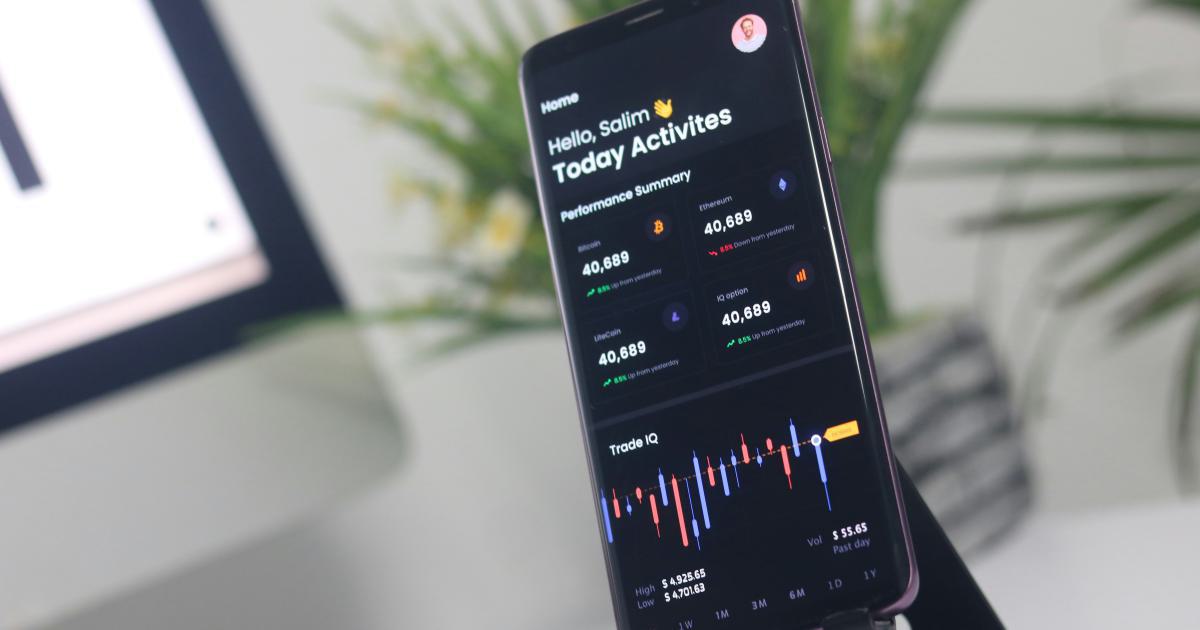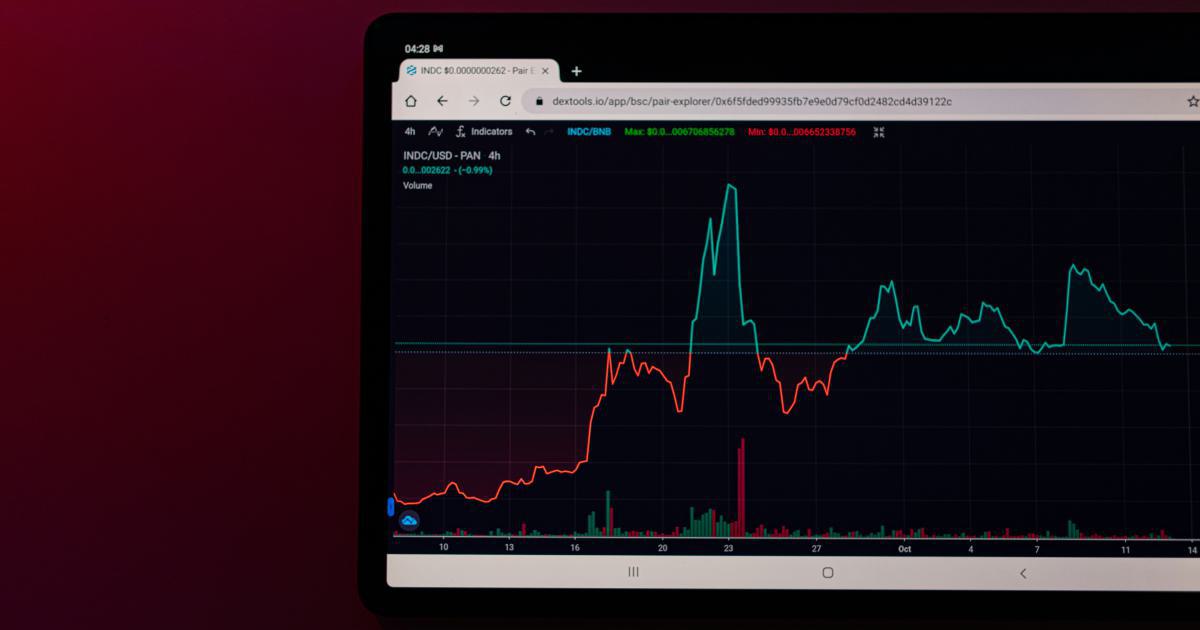Enhance Your Trading with Real-Time Data Feeds

In today's fast-paced market environments, traders are turning increasingly to real-time data feeds for trading to gain a competitive edge. By harnessing live market insights, investors can make informed decisions swiftly, capitalize on emerging trends, and stay ahead of market fluctuations. This article explores in depth how real-time data feeds can revolutionize your trading strategy, offering detailed analyses, actionable recommendations, and real-world examples that illustrate the profound impact of integrating live data into your trading platform.
Introduction to Real-Time Data Feeds in Trading
The landscape of trading has evolved dramatically over the past few decades. With technological advancements, what was once a domain dominated by manual chart analysis and delayed market reports is now powered by instant access to real-time information. In this section, we discuss the evolution of trading tools, the emergence of real-time data feed technology, and why it is becoming indispensable for modern traders.
Evolution of Trading Tools
Historically, traders relied on periodic financial reports and end-of-day data to inform their decisions. Today, however, real-time data feeds for trading have revolutionized the way investors interact with markets. The introduction of high-speed internet, advanced analytics platforms, and dedicated software tools has redefined how investors analyze data and execute trades.
Traders now have access to live tick data, in-depth market sentiment analyses, and instantaneous price quotes which enable them to adjust their strategies on the fly. This transformation is particularly significant in day trading, high-frequency trading, and algorithmic trading strategies where every fraction of a second counts.
The Essence of Real-Time Data Feeds
At its core, a real-time data feed is a continuous stream of market data delivered directly to traders and trading systems. This service offers instant updates about market movements, trading volumes, price changes, and other pertinent metrics. The direct integration of this data into trading platforms has allowed for faster decision-making and the automation of trades based on real-time signals.
Real-time data feeds empower traders to monitor trends as they occur, rather than relying on delayed information that may be outdated by the time it is acted upon. The ability to react swiftly to market changes is fundamental to maximizing profits and minimizing potential losses.
Key Features of Real-Time Data Feeds
Some of the critical features that define robust real-time data feeds include:
- Low Latency: The delivery of data with minimal delay, ensuring that the information reaches traders instantly.
- Comprehensive Coverage: Access to a wide range of financial instruments including stocks, bonds, commodities, forex, and cryptocurrencies.
- Scalability: The ability to handle large volumes of data without compromising performance.
- Reliability: Consistent and accurate data delivery even during periods of high market volatility.
- Integration Capability: Seamless integration with trading platforms and analytical tools.
The adoption of these features has considerably enhanced modern trading systems, making them more responsive and efficient.

The Importance of Real-Time Data Feeds for Trading
Real-time data feeds are not just a luxury; they are rapidly becoming a necessity. The ability to receive market updates instantaneously can mean the difference between a successful trade and a missed opportunity. In this section, we explore the many benefits that real-time data feeds offer, along with some of the challenges traders might face when integrating this technology.
Enhancing Decision-Making in High-Stakes Environments
In volatile markets, real-time insights allow traders to make swift and informed decisions. This is especially crucial during market openings, economic announcements, and periods of significant global events. With access to timely and accurate data, traders can implement stop-loss orders, adjust positions, or exit trades before unfavorable market conditions worsen.
High-frequency trading (HFT) is one area where the benefits of real-time data are particularly evident. HFT algorithms rely on the ability to process vast amounts of data and execute orders within microseconds. Without real-time data feeds, these algorithms would lose their edge, leading to potential financial losses.
Mitigating Risks with Live Data
One of the most significant advantages of real-time data feeds is enhanced risk management. By continually monitoring market conditions, traders can detect potential warning signs and adjust their strategies accordingly. For example, if a sudden market downturn begins, automated trading systems can execute pre-determined risk mitigation actions, such as selling off assets or rebalancing portfolios to limit exposure.
In scenarios where sudden market events occur, not having real-time data is akin to flying blind. Real-time analytics provide transparency and confidence, aiding traders in making decisions that align with their risk tolerance and strategic goals.
Increasing Operational Efficiency and Accuracy
Timeliness combined with accuracy results in higher operational efficiency. For traders who rely on quantitative analysis, ensuring that the data they input is as current as possible minimizes errors and improves the performance of predictive models. It also helps in reducing the mental load on traders, who no longer need to manually monitor market feeds or cross-check data from multiple sources.
The Role of Automation in Real-Time Trading
Modern trading platforms often incorporate automation, which is significantly enhanced by real-time data feeds. Automated trading systems and algorithms can monitor the market continuously and execute trades without human intervention. This not only speeds up the execution process but also eliminates the potential for human error. Real-time data feeds are integral to the effective functioning of these systems, ensuring that every trade is executed based on the most recent information available.
Practical Advantages for Different Trading Strategies
Different trading strategies benefit in various ways from real-time data feeds:
- Day Trading: Rapid access to live data allows day traders to capture short-term market fluctuations effectively.
- Swing Trading: For traders holding positions over several days, real-time data can indicate the optimal time to enter or exit a trade.
- Long-Term Investing: Even investors with a longer-term outlook can benefit by avoiding major losses during unexpected market events.
- Arbitrage Trading: The ability to detect and exploit small discrepancies between markets is critical in arbitrage, where timing is everything.
The integration of real-time data feeds is transforming how traders approach the market, whether they are executing rapid-fire trades or managing long-term investment portfolios.
Integrating Real-Time Data Feeds into Trading Platforms
To fully benefit from real-time data feeds, traders need to integrate these feeds into their existing trading platforms. This integration process involves both technological and strategic considerations. Here, we break down the key steps and best practices to ensure a smooth incorporation of live data into your trading activities.
Choosing the Right Data Feed Provider
One of the first steps in integrating real-time data feeds is selecting a reliable provider. When evaluating providers, consider the following aspects:
- Data Accuracy and Timeliness: Verify that the provider delivers accurate, up-to-date information with minimal latency.
- Coverage: Ensure that the provider offers comprehensive coverage of the markets and instruments relevant to your trading strategy.
- Technical Support: A dedicated support team can be invaluable when troubleshooting integration issues.
- Cost: Balance the cost of the service with the value it provides. Some providers offer tiered plans catering to different trading volumes and needs.
Step-by-Step Integration Process
Assessment of Requirements: Begin by defining the specific needs of your trading platform. Determine which market data is most critical and evaluate how frequently updates are required.
API Integration: Most providers offer APIs (Application Programming Interfaces) that allow seamless integration between the data feed and your trading software. APIs enable real-time data streaming and facilitate automated data processing.
Testing and Calibration: Before going live, conduct thorough testing in a sandbox environment. This step helps in identifying potential issues and fine-tuning the system to manage high data loads efficiently.
Monitoring and Maintenance: Once integrated, continuous monitoring is key. Implement automated alert systems to detect glitches or delays in data delivery. Regular updates and maintenance ensure that the system remains robust and reliable under various market conditions.
Leveraging Cloud-Based Solutions
Cloud computing has transformed data management by offering scalable, secure, and cost-effective solutions. By migrating your trading platform to the cloud, you can better handle the vast amounts of data generated by real-time feeds. Cloud-based architectures improve data processing speeds, enhance security measures, and allow for flexible scaling as your trading needs grow.
Real-World Implementation Example
Consider a mid-sized trading firm that recently transitioned to a fully integrated real-time data feed system. By partnering with a reputable provider and implementing API-based data streaming, the firm was able to reduce the latency in trade execution significantly. This improvement allowed the firm to capture market movements more precisely and adjust strategies dynamically, leading to improved profitability and a more competitive edge in the market.
Overcoming Integration Challenges
Integrating real-time data feeds into an existing system can present several challenges:
- Technical Compatibility: Ensuring that the new data feed integrates seamlessly with legacy systems may require custom development.
- Security Concerns: Live data feeds can be potential targets for cyber-attacks. Implement end-to-end encryption and stringent access controls.
- Cost Implications: Both initial integration costs and ongoing subscription fees for high-quality data feeds can be significant. It is crucial to balance cost with potential benefits.
- Data Overload: Managing large volumes of data in real-time can overwhelm processing systems if not properly optimized.
By addressing these challenges proactively, traders and firms can fully exploit the advantages offered by real-time data feeds and enhance their overall trading performance.

Overcoming Challenges and Maximizing Benefits
While the advantages of real-time data feeds are numerous, the practical implementation of these systems comes with its own set of challenges. In this section, we delve into the common obstacles and provide actionable solutions to mitigate these issues, ensuring marketers and traders get the most out of their investment.
Technical and Infrastructure Hurdles
One primary concern when integrating real-time data feeds is ensuring that existing IT infrastructure can handle continuous, high-volume data streams. Legacy systems often struggle with the data throughput required by live feeds, leading to potential delays or system crashes. To overcome these obstacles:
- Upgrade Your Infrastructure: Investing in high-performance servers, efficient network solutions, and scalable storage systems can dramatically improve your system’s capability to handle real-time data.
- Implement Load Balancers: Distribute the data processing load across multiple servers to prevent bottlenecks and ensure a smooth flow of information.
- Regular System Audits: Frequent assessments and updates of your IT systems ensure that all components of your data processing chain are optimized for performance.
Data Security and Privacy Concerns
Given the sensitivity of trading data, security is paramount when dealing with real-time streams. Cybersecurity threats can arise from multiple vectors including unauthorized access, data breaches, and even deliberate manipulation of data. Employ these strategies to secure your data feeds:
- Encryption Protocols: Use encryption methods both during data transmission and at rest to protect confidential information.
- Access Controls: Establish clear, role-based access permissions and regularly update security protocols to prevent unauthorized access.
- Regular Security Audits: Conduct frequent security assessments to identify vulnerabilities and address them immediately.
Managing Data Overload and System Bottlenecks
Real-time data feeds can generate an overwhelming amount of information. Without a proper filtering mechanism, the sheer volume of data can slow down trading systems. Consider these measures:
- Data Filtering Algorithms: Implement algorithms that trim unnecessary or redundant information, leaving only the critical data required for making trading decisions.
- Customizable Dashboard Views: Develop user interfaces that allow traders to select and prioritize the data streams that are most relevant to their strategies.
- Efficient Data Storage: Utilize cloud storage solutions that offer quick retrieval times and scalability, ensuring that historical data can be accessed when needed without hindering real-time operations.
Training and Adaptation for Teams
Integrating new technology often requires a cultural shift within an organization. Teams must understand how to interpret and act upon real-time data. Comprehensive training programs and regular workshops can help bridge the gap between technology and execution. Additionally:
- User-Friendly Platforms: Opt for systems with intuitive interfaces that facilitate quick learning and ease of use.
- Ongoing Support: Establish a dedicated support team to assist in troubleshooting and continuously educate users on maximizing the benefits of real-time data feeds.
- Feedback Mechanisms: Incorporate feedback loops to gather insights from traders and refine the system accordingly.
Maximizing Benefits Through Best Practices
To fully capitalize on real-time data feeds, traders should adopt a proactive approach by integrating industry best practices into their routines:
Continuously optimize your trading strategies based on the latest market trends and real-time insights.
Regularly back-test trading algorithms against historical data to validate performance and make necessary adjustments.
Emphasize collaboration within your team by sharing insights and experiences gained through real-time analysis.
Stay updated with technological advancements to ensure your trading platform remains at the forefront of innovation.
Conduct periodic risk assessments to align your strategies with the dynamic market environment.
The integration of real-time data feeds into a trading system is not a one-time event but a continuous process that involves constant improvement and adaptation to new challenges and opportunities.
The Future of Trading with Real-Time Data Feeds
Trends in trading technology indicate that the role of real-time data feeds will only expand in the coming years. Emerging technologies such as artificial intelligence (AI) and machine learning are poised to leverage real-time data to predict market trends with unprecedented accuracy.
The Rise of AI and Predictive Analytics
Artificial intelligence is making significant inroads into the domain of trading. By analyzing massive volumes of real-time data, machine learning algorithms can identify patterns and forecast market movements with remarkable precision. This fusion of AI and real-time data has several implications:
- Enhanced Predictive Accuracy: Machine learning models, trained on historical and live data, can predict market trends, thereby helping traders stay one step ahead.
- Automated Trading Strategies: AI-driven algorithms can continuously adapt to market conditions and execute trades automatically, reducing human error and emotional biases.
- Scalable Decision-Making: As the complexity of global markets increases, relying on AI ensures that traders can process information at a pace far beyond human capability.
Emerging Technologies and Their Impact
In addition to AI, other emerging technologies are set to transform how real-time data feeds are utilized in trading:
- Blockchain Technology: Enhanced transparency and security from blockchain can further ensure the integrity of live data streams.
- Edge Computing: Processing data closer to the source minimizes latency significantly—a crucial element in high-frequency trading scenarios.
- Augmented Reality (AR): Innovative visualization tools enabled by AR may soon allow traders to interact with real-time data in three-dimensional spaces, offering new ways to interpret complex information.
Global Market Trends and Regulatory Considerations
As real-time data feed technology becomes ubiquitous in trading, so too will discussions regarding regulatory frameworks. The increasing reliance on automated decision-making has raised concerns about market manipulation, data privacy, and fairness. Regulators worldwide are beginning to craft policies that balance innovation with market stability and transparency.
Future-Proofing Your Trading Strategy
To stay ahead of the curve:
- Invest in Continuous Education: Stay informed about the latest trends in trading technology to quickly adopt new strategies.
- Invest in Technology Upgrades: Regular updates and system enhancements ensure that your trading platform is well-equipped to handle future market demands.
- Embrace Collaboration: Sharing insights with industry peers can uncover innovative approaches to incorporating real-time data feeds.
The evolving landscape of trading is a testament to the transformative power of technology. The future will likely bring even more sophisticated data processing tools and analytic methods, making real-time data feeds an essential backbone for successful trading strategies worldwide.
Conclusion: Embrace the Power of Real-Time Data Feeds
Real-time data feeds represent a monumental shift in how traders engage with financial markets. By providing access to instantaneous market insights, they empower traders to make smarter, more informed decisions, manage risks effectively, and leverage technological advancements to their advantage. The journey to integrating these feeds might come with challenges—from technical upgrades to system security—but the benefits far outweigh the obstacles.
Traders who adapt to incorporating live data into their decision-making processes will undoubtedly gain a substantial competitive edge in the rapidly evolving trading landscape. Whether you are an individual day trader, a mid-sized trading firm, or a large financial institution, the potential to enhance your trading strategies through real-time data feeds is immense.
Success in today’s dynamic market environment hinges on your ability to evolve and embrace technology. As markets become more interconnected and fast-paced, staying informed with live data is not merely an advantage—it is an essential component of any robust trading strategy.
For those ready to step up their trading game, the process begins with evaluating your current technological infrastructure, selecting the right data feed partner, and integrating these live insights to create a more agile, responsive, and ultimately successful trading system. Now is the time to place real-time data feeds at the heart of your strategy and embark on a journey toward unprecedented trading success.
Embrace the innovation that real-time data feeds provide and watch as your trading performance transforms. With the continuous evolution of data technologies and the integration of advanced tools like AI, the future of trading looks promising—and it starts with making data instantaneous, actionable, and most importantly, accessible to every trader aiming for excellence.

In summary, real-time data feeds have become a cornerstone of modern trading. They not only democratize access to critical market information but also level the playing field, enabling traders of all sizes to compete effectively. With the right integration strategy, robust risk management processes, and continuous investment in technology, your trading operations will be well-equipped to navigate the complexities of today’s financial markets. The pathway to smarter trading lies in seizing, analyzing, and acting upon the live data that drives market trends.
As you refine your trading strategy, remember that the integration of real-time data feeds is an ongoing process, one that requires continual adaptation to new technologies and market dynamics. By developing a culture of proactive learning and strategic experimentation, you can transform challenges into opportunities and ensure that your trading operations remain agile, informed, and resilient in the face of ever-changing market conditions.
Ultimately, whether it’s by leveraging advanced analytics, harnessing AI, or simply ensuring that your data infrastructure is optimized for speed and accuracy, the benefits of real-time data feeds for trading are clear. They not only enhance your competitive edge but also provide critical insights when every moment matters.
Let this comprehensive guide be your roadmap to integrating real-time data feeds into your trading strategy—a journey that promises improved performance, greater efficiency, and a future-ready approach to navigating the financial markets.
Unlock the Power of Crypto Trading with Binance
Tired of missing out on lucrative trading opportunities? Elevate your game with Binance, the leading crypto exchange trusted by millions worldwide.
With lightning-fast execution, institutional-grade security, and a user-friendly interface, Binance empowers you to seize market moves with confidence. Plus, enjoy access to 100+ cryptocurrencies and cutting-edge tools. Join now and experience the future of trading.
Unmatched Trading Power with Binance
Are you ready to take your trading game to new heights? Binance offers a cutting-edge platform for seamless cryptocurrency transactions.
With lightning-fast execution, top-tier security, and a vast selection of coins, you'll have all the tools you need to maximize your profits. Join now and experience the future of trading.
Shion Tanaka
31 posts written
Combining cutting-edge mathematical models with a deep understanding of market dynamics, Shion Tanaka has revolutionized algorithmic trading strategies, yielding unprecedented returns for global financial institutions.
Read Articles




